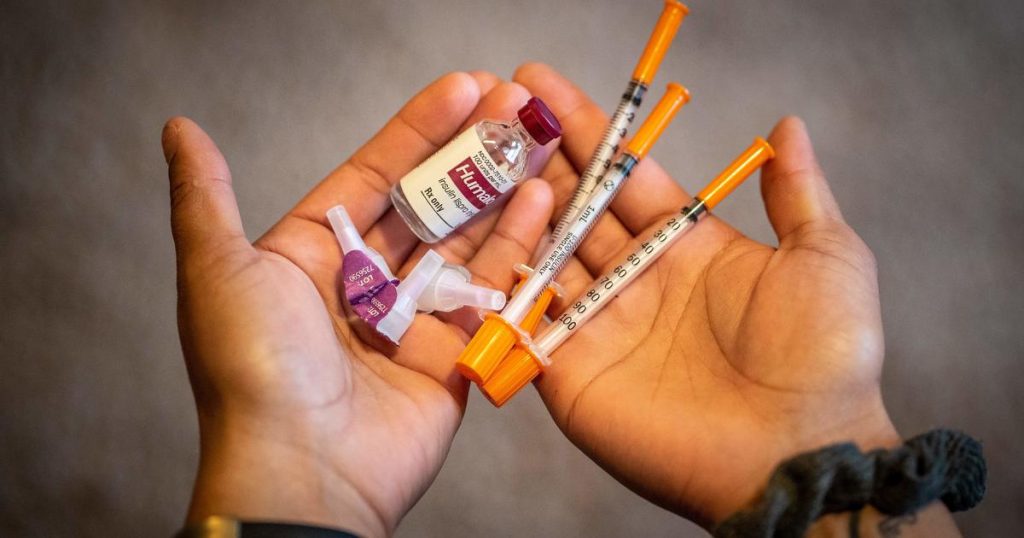In June 2019, Lija Greenseid handed Minnesota Gov. Tim Walz an empty vial of insulin that her 13-year-old daughter had painted gold, symbolizing the preciousness of the lifesaving drug. The price of insulin had risen by about 1,200% between 1996 and 2018, prompting Greenseid to advocate for lower prices. Ten months later, Walz signed the Alec Smith Insulin Affordability Act, named after a 26-year-old Minnesotan who died from rationing insulin. This law made insulin more affordable for patients in Minnesota, regardless of their insurance status, garnering national attention and making insulin affordability a key issue in the presidential campaign.
Advocates for diabetes patients are concerned that neither presidential candidate would go as far as the Minnesota law in addressing insulin affordability. While both former President Donald Trump and Vice President Kamala Harris have proposed policies to make insulin cheaper for some patients, they may not provide the same level of assistance as the Minnesota law. Copayment caps, which have been enacted by 25 states, provide immediate financial relief for patients but do not address the high list prices of insulin, leaving uninsured patients without a solution. Minnesota’s insulin program, on the other hand, offers a safety net for patients by providing insulin at a lower cost.
The landscape on insulin pricing has evolved in recent years, with the Trump administration and President Joe Biden taking steps to cap copayments for insulin under Medicare plans at $35 a month. Vice President Kamala Harris has proposed extending this cap to Americans with commercial health insurance. However, the Minnesota program goes beyond copayment caps by ensuring patients can access affordable insulin even if they are uninsured. The program has faced legal challenges from pharmaceutical companies, who argue that it violates the U.S. Constitution, but it has already helped over 1,500 individuals obtain insulin at a reduced cost.
Pharmaceutical industry lobbying groups have pushed back against the Minnesota law, arguing that it is unconstitutional and does not address the root causes of high insulin prices. They claim that insurance companies and pharmacy benefit managers (PBMs) play a significant role in driving up insulin costs by negotiating discounts with manufacturers and keeping the savings for themselves. Despite these challenges, advocates like Lija Greenseid and Nicole Smith-Holt have been successful in drawing attention to the issue and pushing for policy changes to make insulin more affordable for patients.
The Federal Trade Commission has taken action against PBMs for allegedly inflating insulin prices, further highlighting the complex dynamics contributing to the high cost of the drug. Regardless of the outcome of the presidential election, existing insulin policies like copayment caps are unlikely to be rolled back due to the advocacy efforts of individuals like Smith-Holt and Greenseid. By sharing real stories and highlighting the moral implications of high insulin prices, advocates have effectively influenced policymakers and brought attention to the need for reforms in the healthcare system to prioritize patient health over profits.
In conclusion, the fight for insulin affordability continues to be a critical issue for millions of Americans who depend on the drug to manage diabetes. Policy changes at the state and federal levels have made some progress in reducing costs, but challenges remain in addressing the root causes of high insulin prices. Advocates like Lija Greenseid and Nicole Smith-Holt have played a crucial role in raising awareness and pushing for meaningful reforms to ensure that all patients have access to affordable insulin. The ongoing legal battles and debates surrounding insulin affordability underscore the importance of addressing this issue to improve healthcare access and outcomes for individuals with diabetes.


